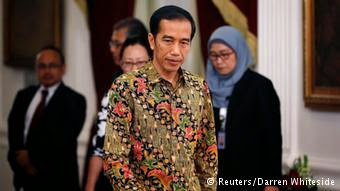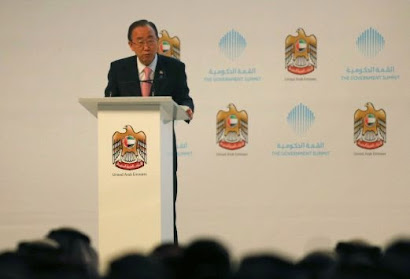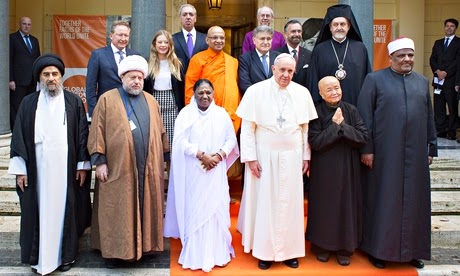Trisha Sertori, Contributor The Jakarta Post, Ubud, Bali
It is extraordinary when an artist's first exhibition is a retrospective spanning almost four decades. But then painter, sculptor, violin maker and more -- Abdul Aziz, was an extraordinary man.
"He was too busy to exhibit. He was a most extraordinary man interested in everything, art, music, books. Books! When I first met him in 1985 his house was walls of books -- books on everything, everywhere," said Mary Northmore Aziz, his widow and author of the artist's biography, Abdul Aziz: The artist and his art
Mary was also instrumental in the current retrospective at Neka Art Museum in Ubud, featuring some of Aziz' best known three dimensional paintings center stage.
But the retrospective shares far more than the artist's paintings, sculptures and violins; there are also snippets from his life, school reports, student cards from Yogyakarta's Fine Arts Institute, ASRI (now ISI), pen and ink sketches, tickets, identity cards and his letter to the Accademia di Belle Arti in Rome that won him a scholarship that resulted in him taking two diplomas in Rome. It was also his time in Italy, says Mary, which rounded out the artist's masterful use of light, shade and perspective seen at its most developed in his three dimensional, out-of-the-frame works.
Long before Aziz encountered formal art schools, he was already producing the masterpieces in human connections so profoundly seen in his later works, such as Mutual Attraction. Born into a highly respected Purwokerto family in Central Java, Aziz was painting almost as soon as he could walk; his cousin writes when the artist was just 4 years old and short of drawing materials he would mix betel nut and other natural dyes for inks. That need to interpret the world around him visually; that need for hand to pencil to paper, daily to create, was his earliest teacher.
The 1956 pre art school work, The Long March tells poignantly of his time as a soldier during Indonesia's freedom struggle. To the left of the work a couple sits, backs to the viewer, heads turned slightly toward each other. The body language of the subjects is so tender, their awareness of the possibility this could be their last moment together is palpable to the viewer, causing them to be silent for fear of disturbing them.
Aziz's ability to draw the subjects out of the frame was already forming, to be later honed in Yogyakarta and Rome and given life in Bali, where he lived since 1966 until his death in 2002.
"It was this triumvirate of Java, Europe and Bali; the renaissance technique of Europe, the aesthetic of Bali with the restraint of Java that comes together in his work," said Mary of Aziz's works, which hold the Javanese elegance of understatement, the depth of light and shadow, skin tone, anatomy and drapery of the European form that combine to give a vibrancy and energy to his subject, the every day scenes of Balinese life.
"I think it is his empathy with the Balinese people, there is an emotion and technically it is the three dimensional element of his works, which gets them as close to living, breathing human beings as you can get ... and the beauty," said Mary on what she believes to be the most enduring element of her late husband's works.
Assembling the works for the retrospective was less difficult than she had first imagined. Almost four years of her life had been dedicated to researching and writing Aziz' biography, so "all the legwork had been done. I knew the collectors and where many of the works were and I knew exactly how I wanted to see it. To have the triptych and the four pairs in the entry gallery is the room I have always wanted to see," Mary said.
The opportunity to view so many of the artist's works, covering decades, in one space is extremely rare, this is the first time the works have been hung together, and as mentioned at the top of the story, this is also the artist's first exhibition.
"Aziz' works very rarely come up for auction and there are a couple of reasons for this. One is that he was not a prolific painter when compared to say, Affandi who painted a lot of canvasses. Aziz was not like that; he played music, he sculpted so the output (paintings) of his life is a lot less than other artists. Another reason is that he gave paintings to friends, people he cared for. And when people met him there was such a connection they never wanted to sell his works so it is still very rare for the works to come up for auction," Mary said.
And this is why the Abdul Aziz retrospective is so very important; his works are copied on every corner, his technique even borrowed in advertising, but to see the originals, Aziz' subjects speaking out from the canvas, reminds us that fine art is empathic and very much alive.
"I am just so proud of him -- happy I can do this in Ubud, his home, happy it's (the retrospective) at Neka because of his long relationship with Neka, and I want people to know him here. And to be selfish, I wanted to see the works together. From the outset I knew I wanted the triptych and the four pairs in one room; it makes me so happy and I think it makes others happy too," said Mary adding "love talking about Abdul Aziz".
The Abdul Aziz retrospective is on at the Neka Art Museum until Jan. 13, and the museum has guided tours of the show. For more information contact Mary Northmore Aziz on 0811 395 963. The retrospective will travel to Jakarta in 2008.






No comments:
Post a Comment